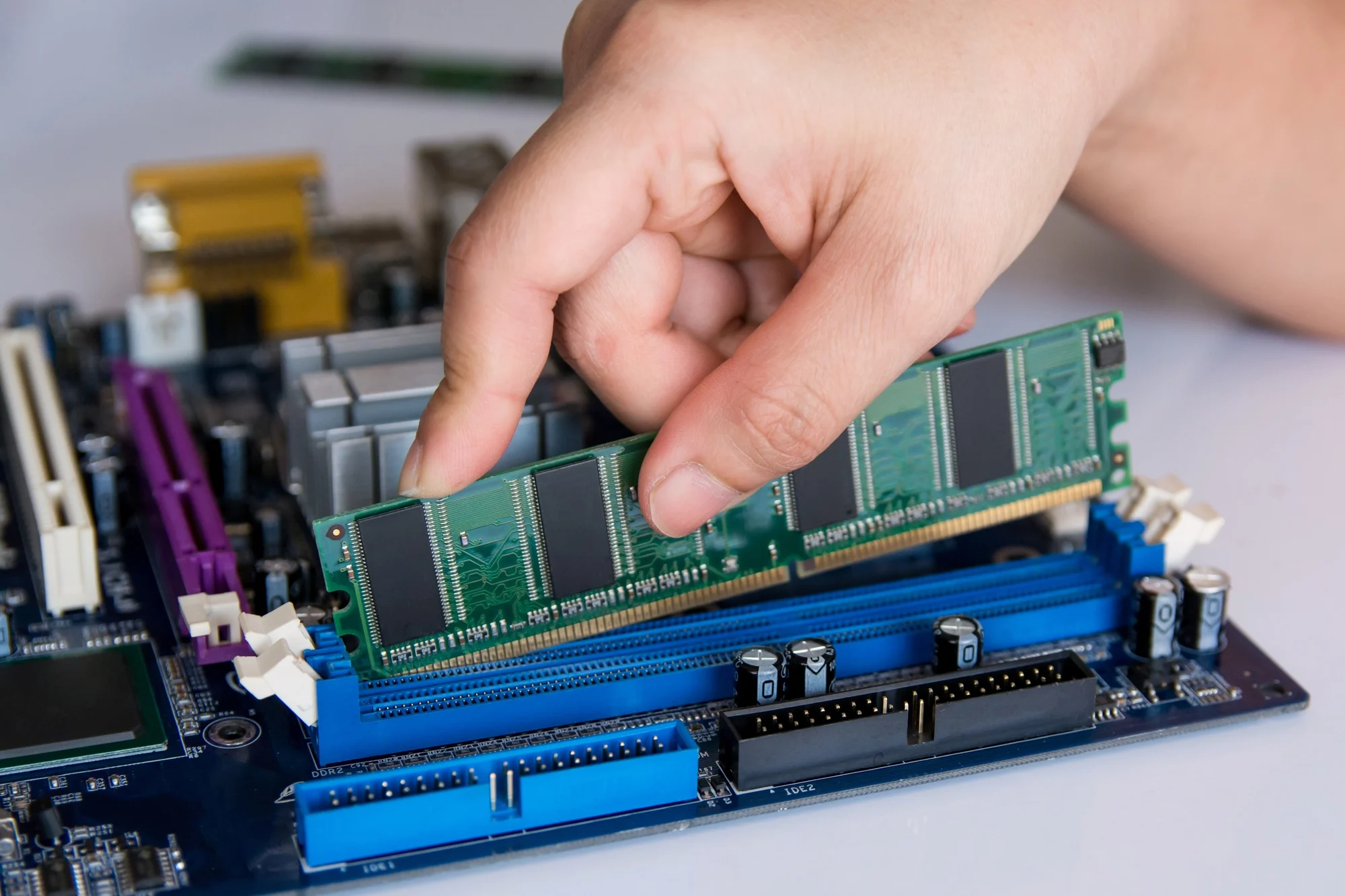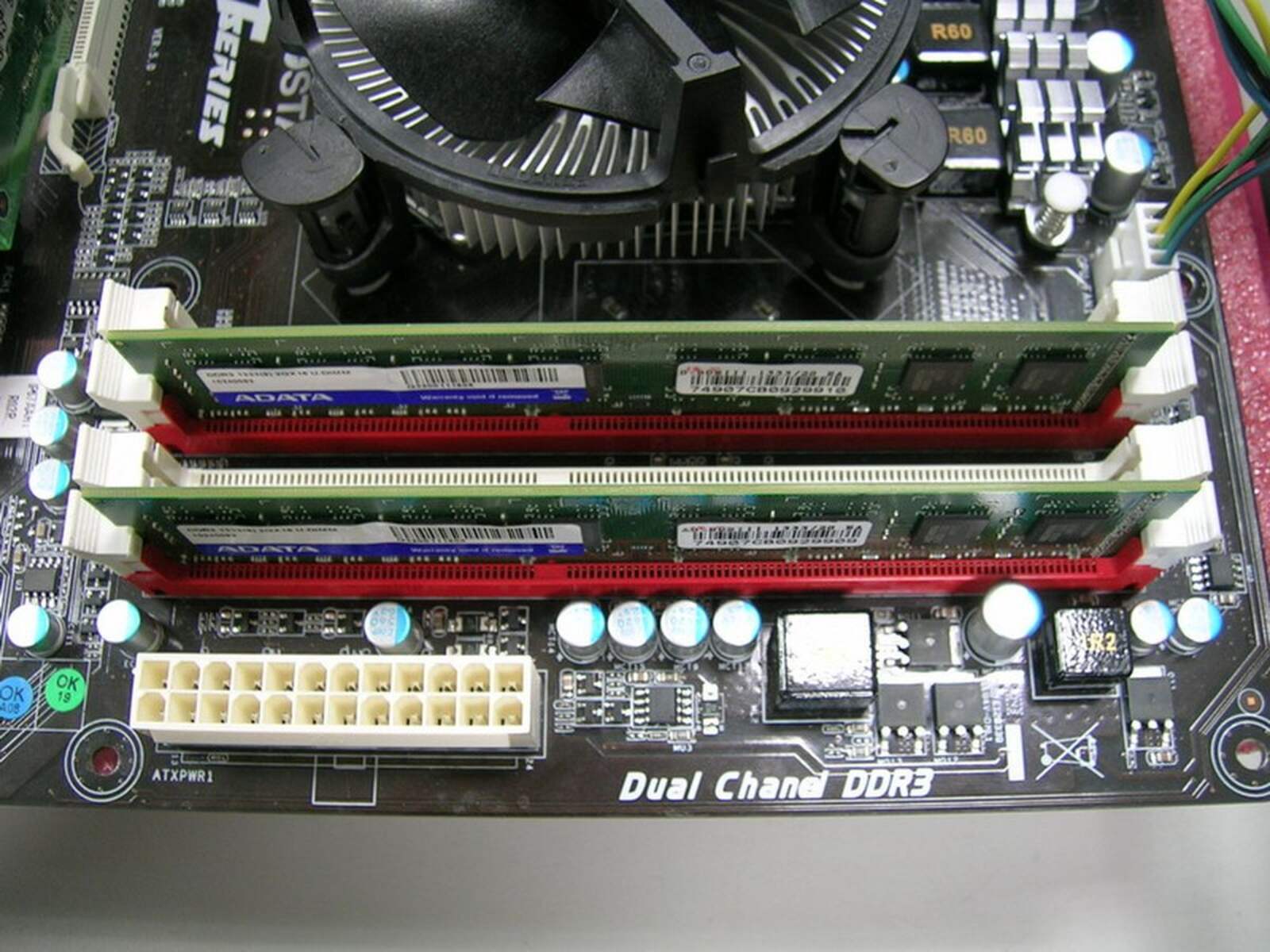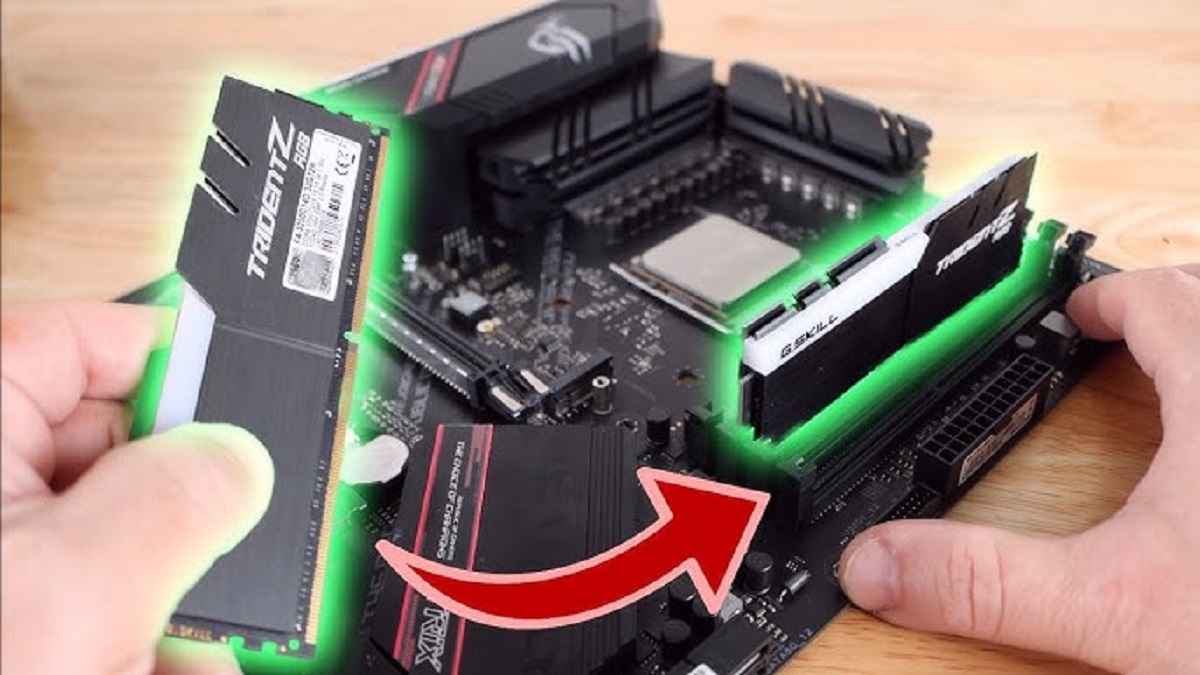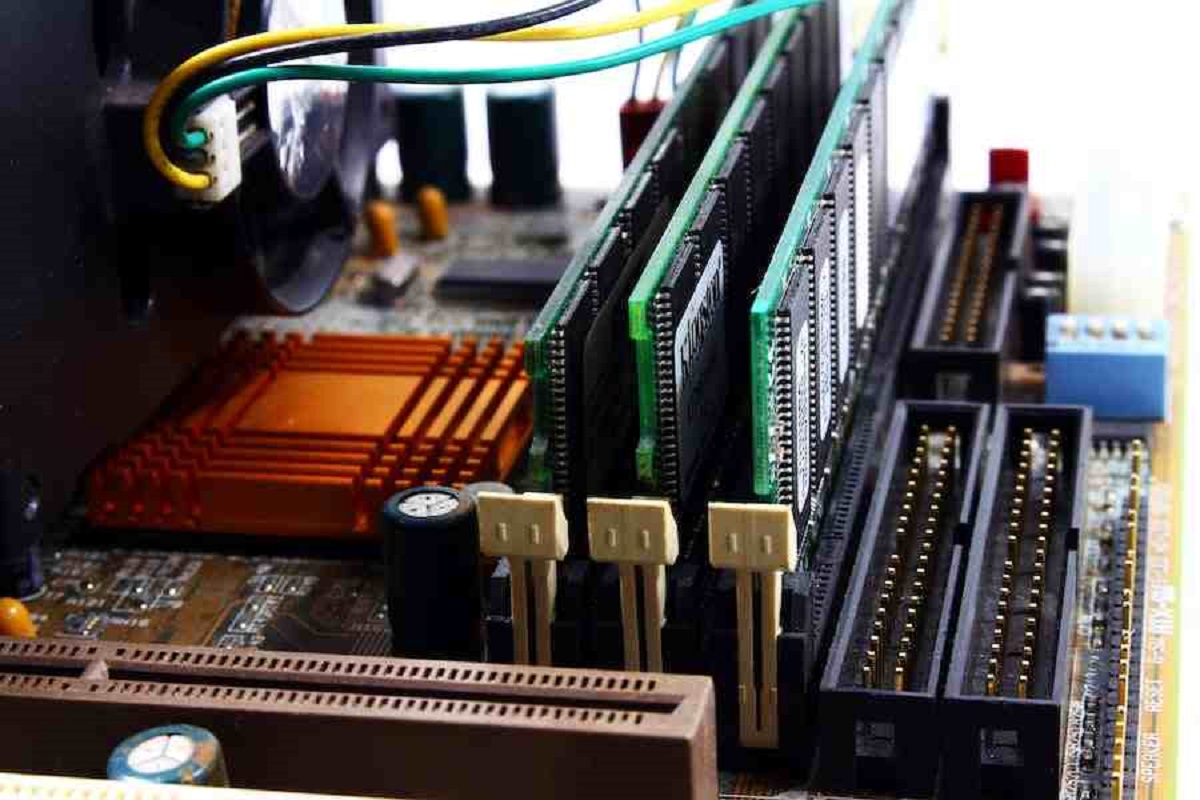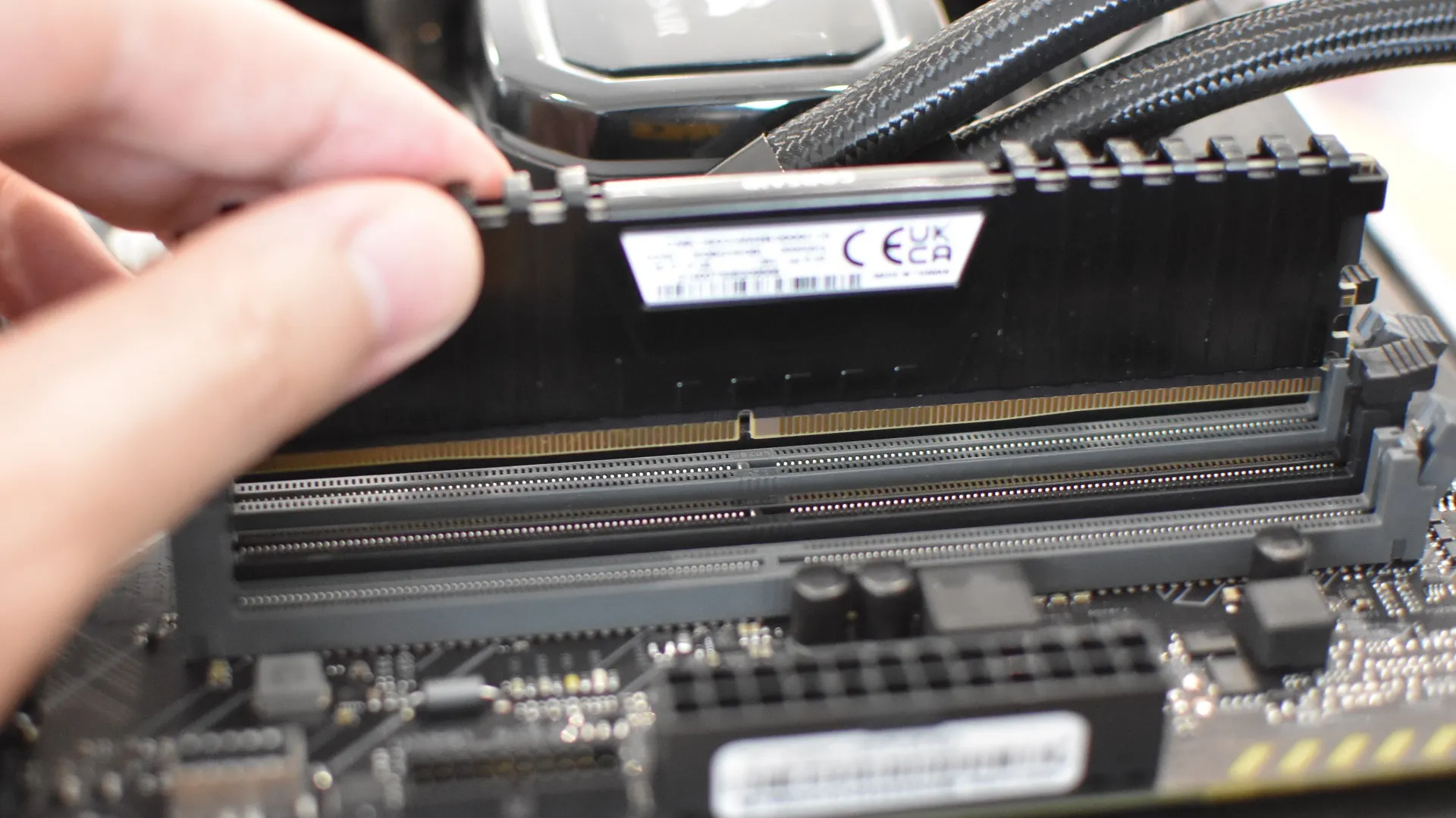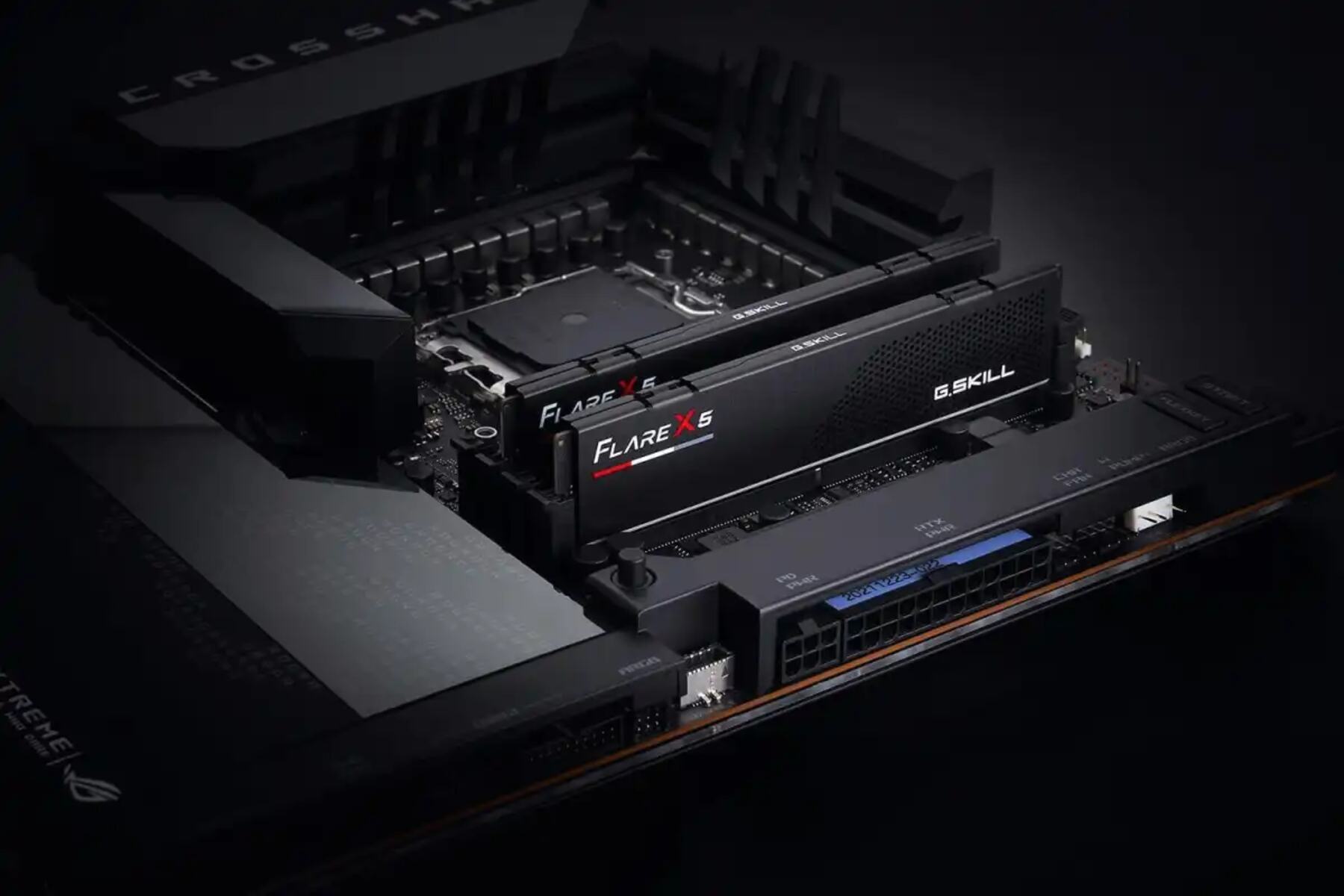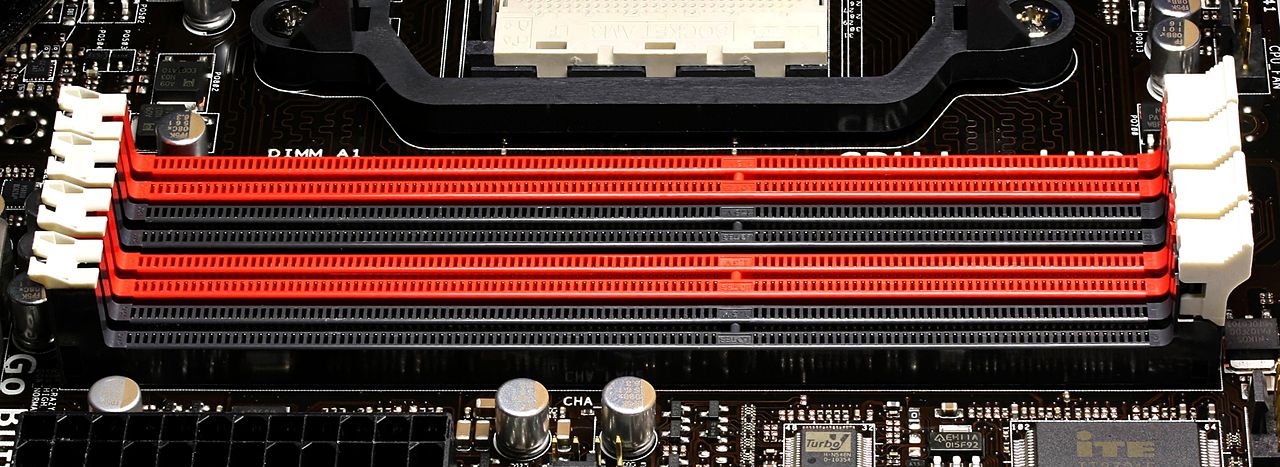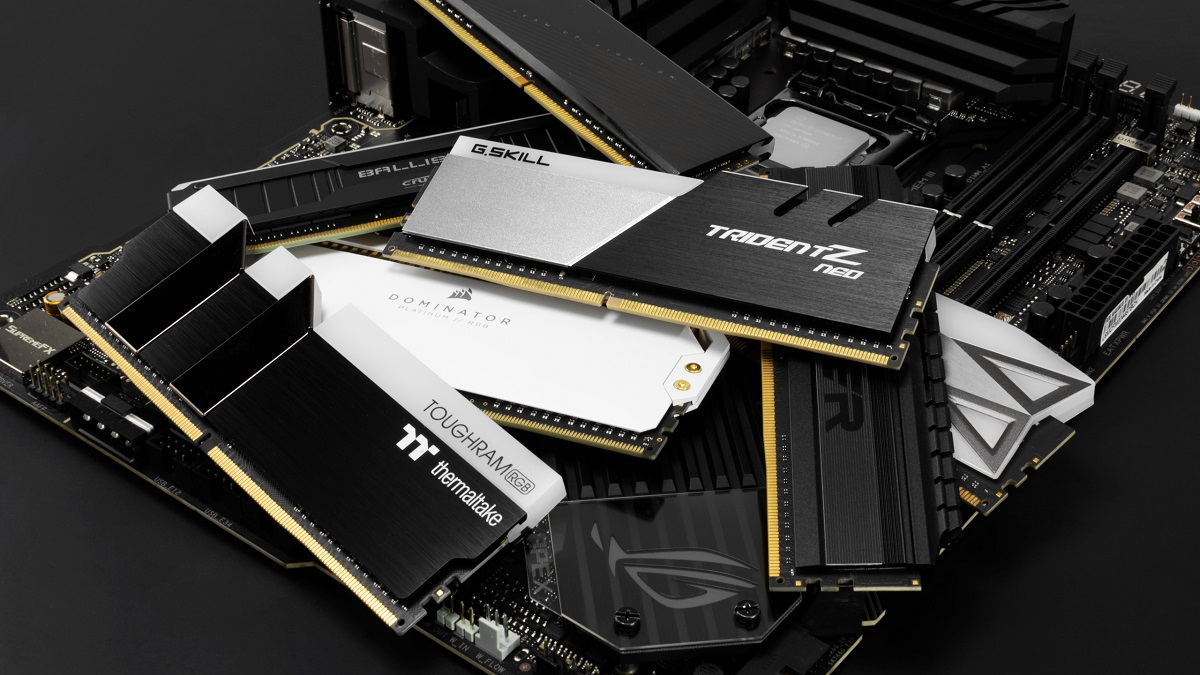Introduction
Welcome to our comprehensive guide on running dual channel RAM! If you’re looking to boost the performance of your computer, optimizing your RAM configuration can make a significant difference. Dual channel RAM is a technology that allows for faster data transfer between the RAM and the processor, resulting in improved overall system performance and responsiveness.
In this article, we will take a deep dive into the world of dual channel RAM. We will explain what it is, its benefits, the requirements for running it, and the steps to successfully install and configure it in your system. Whether you’re a seasoned computer enthusiast or a beginner looking to upgrade your RAM, this guide will provide you with all the information you need to harness the power of dual channel RAM.
Before we dive into the details, let’s briefly understand how RAM works. RAM (Random Access Memory) is a type of volatile memory in your computer that temporarily stores data that the processor needs to access quickly. When you run applications or perform any tasks on your computer, the data is loaded from the hard drive into the RAM for faster access. The faster the RAM can retrieve and store data, the smoother and more efficient your system will run.
Dual channel RAM is a configuration that takes advantage of two identical RAM modules working together simultaneously, doubling the bandwidth between the RAM and the processor. This higher bandwidth allows for more data to be transferred back and forth, resulting in improved system performance. However, keep in mind that not all computers and motherboards support dual channel RAM, so it’s essential to check compatibility before making any changes to your system.
In the following sections, we will delve into the benefits of running dual channel RAM, the requirements you need to meet, the process of checking compatibility, and the steps to properly install and configure dual channel RAM. So without further ado, let’s get started on optimizing your computer’s performance with dual channel RAM!
What is Dual Channel RAM?
Dual channel RAM is a technology that allows for improved data transfer between the RAM and the processor by utilizing two identical RAM modules simultaneously. In a standard single channel configuration, data is transferred to and from the processor through a single memory module. However, with dual channel RAM, data is distributed across two modules, effectively doubling the available bandwidth and enhancing system performance.
The key principle behind dual channel RAM is to alleviate any potential bottlenecks in the data transfer process. By using two identical RAM modules, the system can read and write data simultaneously, resulting in faster data access and reduced latency. This ultimately translates into quicker application loading times, smoother multitasking, and improved overall system responsiveness.
To achieve the benefits of dual channel RAM, it is crucial to install identical RAM modules in specific slots on your motherboard. These slots are typically color-coded to indicate which ones should be used for dual channel configuration. The memory controller in the motherboard coordinates the data transfer between the modules, ensuring optimized performance.
It’s important to note that dual channel RAM does not increase the overall capacity of the RAM. If you have two 4GB RAM modules in a dual channel configuration, your system will still have a total of 8GB of accessible memory. However, the advantage lies in the increased bandwidth and improved efficiency of data transfer.
Not all computers and motherboards support dual channel RAM, so it’s essential to check your system’s compatibility before attempting to configure it. Some older systems or low-end motherboards may only support single channel RAM. Additionally, both RAM modules must be of the same capacity and speed for optimal performance. Mixing different capacities or speeds may lead to compatibility issues and potentially disable the dual channel functionality.
In the next sections, we will explore the various benefits of running dual channel RAM, the specific requirements for implementing it, how to check if your system supports it, and the step-by-step process of installing and configuring dual channel RAM. So, let’s move on to understanding the significant advantages of utilizing dual channel technology in your computer system.
Benefits of Running Dual Channel RAM
Running your computer’s RAM in dual channel mode offers several significant benefits that can greatly enhance your system’s performance and overall user experience. Let’s explore these advantages in more detail:
- Increased Memory Bandwidth: The primary benefit of dual channel RAM is the increased memory bandwidth it provides. By utilizing two identical RAM modules simultaneously, the system can transfer data at a higher rate between the RAM and the processor. This increased bandwidth leads to faster data access and retrieval, resulting in improved overall system performance and responsiveness.
- Improved System Stability: Dual channel RAM can enhance system stability by reducing the chances of data corruption or loss. The simultaneous data transfer between the two RAM modules helps to balance the workload and distribute the data evenly. This can mitigate potential bottlenecks and prevent data transfer errors, thus promoting a more stable computing environment.
- Better Multitasking Capability: Dual channel RAM allows for smoother multitasking as it enables the system to handle multiple tasks simultaneously without significant performance degradation. With increased memory bandwidth, you can run multiple applications and processes concurrently, seamlessly switch between tasks, and experience a smoother and more efficient multitasking experience.
- Faster Application Loading Times: Applications stored in RAM can be quickly accessed and loaded into the processor for execution. With dual channel RAM, the data can be read and written at a faster rate, resulting in reduced loading times for applications. Whether you’re launching demanding software or loading large files, dual channel RAM can significantly speed up these processes, saving you valuable time and increasing productivity.
- Enhanced Gaming Performance: Dual channel RAM can provide a noticeable performance boost in gaming, particularly in scenarios where the game relies heavily on memory-intensive operations. Having faster access to data and a higher bandwidth allows the system to process game-related information more efficiently, resulting in smoother gameplay, reduced lag, and improved overall gaming performance.
These benefits make dual channel RAM a compelling option for users who require optimal system performance and responsiveness. However, it’s essential to consider the specific requirements and compatibility of your system before implementing dual channel RAM. In the next sections, we will discuss the necessary prerequisites, how to check compatibility, and the step-by-step process of installing and configuring dual channel RAM in your computer system.
Requirements for Running Dual Channel RAM
Before diving into the installation and configuration process, it is crucial to ensure that your system meets the necessary requirements for running dual channel RAM. Here are the key prerequisites to consider:
- Compatible Motherboard: Not all motherboards support dual channel RAM. It’s essential to check your motherboard’s documentation or specifications to confirm if dual channel RAM is supported. Typically, newer motherboards and those designed for high-performance systems are more likely to offer dual channel support.
- Identical RAM Modules: To configure dual channel RAM, you need to use two identical RAM modules. They should have the same capacity, speed, and memory timings. Mixing different capacities or speeds may result in compatibility issues and prevent the system from enabling dual channel mode.
- Available RAM Slots: Your motherboard must have sufficient RAM slots to accommodate the two identical RAM modules required for dual channel configuration. Most motherboards have two or four RAM slots, so ensure that you have enough open slots for two modules.
- Supported RAM Speed: Check the maximum supported RAM speed of your motherboard. Your RAM modules should be within the supported range to ensure optimal performance. If you use higher-speed RAM modules, they may be downclocked to match the motherboard’s supported speed.
- BIOS Update: If you encounter compatibility issues or non-functioning dual channel mode, it’s worth checking if a BIOS update is available for your motherboard. Manufacturers often release BIOS updates to address compatibility or performance issues, including support for dual channel RAM.
It’s important to note that the requirements mentioned above are general guidelines. It’s always recommended to consult your motherboard’s manual or visit the manufacturer’s website for detailed information about compatibility, RAM module configurations, and any specific requirements or recommendations for running dual channel RAM on your specific motherboard model.
Once you have verified that your system meets the requirements for dual channel RAM, the next step is to check for compatibility and ensure that your motherboard supports this configuration. In the following section, we will guide you through the process of checking compatibility and confirming whether your system can utilize dual channel RAM.
Checking for Compatibility
To ensure that your system is compatible with dual channel RAM, you need to check both your motherboard’s specifications and the compatibility of your current RAM modules. Here are the steps to follow:
- Check Motherboard Specifications: Start by referring to your motherboard’s manual or visiting the manufacturer’s website to check if it supports dual channel RAM. Look for the specific model number and check if dual channel configuration is mentioned in the specifications or features section.
- Identify RAM Slots: Locate the RAM slots on your motherboard. They are usually near the CPU socket and are labeled with numbers or color-coded. It’s essential to determine which slots should be used for dual channel configuration. The motherboard manual will provide detailed information about this.
- Check Current RAM Configuration: If you already have RAM modules installed, make sure they are identical in terms of capacity, speed, and timings. If they meet the criteria, there’s a good chance that your system is capable of running dual channel RAM. However, keep in mind that it’s still necessary to install them in the correct slots to enable dual channel mode.
- Verify Memory Speed Compatibility: Ensure that your RAM modules’ speed is within the supported range of your motherboard. The motherboard manual or manufacturer’s website will specify the maximum supported RAM speed. If your current RAM modules exceed this speed, they may be downclocked to match the motherboard’s compatibility.
It’s important to note that checking for compatibility is not limited to the hardware components mentioned above. It’s also essential to consider the compatibility of your operating system and any specific requirements or limitations it may have regarding dual channel RAM configurations. Checking the motherboard’s support forums or contacting the manufacturer’s support can provide additional insight into compatibility concerns or known issues.
By thoroughly checking compatibility, you can ensure that your system is ready for the installation and configuration of dual channel RAM. In the next section, we will guide you through the step-by-step process of installing and setting up dual channel RAM in your computer system.
Installing Dual Channel RAM
Now that you have confirmed compatibility and prepared your system, it’s time to install the dual channel RAM modules. Follow these steps to ensure a successful installation:
- Power Off and Unplug: Turn off your computer and unplug the power cord. This will ensure your safety and prevent any potential damage to the components.
- Ground Yourself: Ground yourself by touching a grounded metal surface or wearing an anti-static wrist strap. This will prevent static electricity from damaging sensitive components.
- Access the RAM Slots: Open your computer case and locate the RAM slots. Depending on your motherboard, the RAM slots are typically positioned near the CPU socket. Refer to your motherboard’s manual for the exact location.
- Insert the RAM Modules: Take the first RAM module and align the notch on the module with the corresponding key in the RAM slot. Gently insert the module at a slight angle and apply even pressure until both the module and the retention clips on the sides snap into place. Repeat this process with the second RAM module.
- Ensure Proper Insertion: After inserting the RAM modules, check if they are securely seated in the slots. The retention clips on both sides should be holding the RAM modules firmly in place.
- Power On and Verify: Close your computer case and plug in the power cord. Power on your computer and verify that the RAM modules are detected by checking the system information in the BIOS or using diagnostic software. Ensure that the system recognizes both modules with the correct speed and capacity.
Once the dual channel RAM modules are installed correctly and recognized by the system, you can proceed to the next step of configuring dual channel RAM in the BIOS. Refer to your motherboard’s manual for specific instructions on accessing and navigating the BIOS settings.
It’s worth mentioning that if you encounter any issues during the installation process or if the system fails to recognize the RAM modules, double-check the compatibility, ensure proper seating of the modules, and consult the motherboard manual for troubleshooting guidance. In some cases, a BIOS update may be required to enable dual channel mode or resolve compatibility issues.
In the next section, we will guide you through the process of configuring dual channel RAM in the BIOS, which is essential to fully unlock the performance benefits of running dual channel RAM in your system.
Configuring Dual Channel RAM in BIOS
After successfully installing the dual channel RAM modules, the next step is to configure them in the BIOS to enable dual channel mode. Follow these steps to ensure proper configuration:
- Access BIOS Settings: Restart your computer and enter the BIOS settings by pressing the designated key during boot-up. The key to access the BIOS can vary depending on your motherboard manufacturer and model. Common keys include Delete, F2, and F10. Check your motherboard manual for the specific key.
- Navigate to Memory Settings: Once in the BIOS, navigate to the memory or DRAM settings. The location of this setting can vary depending on the BIOS version and motherboard manufacturer. Look for options related to memory or RAM configuration.
- Enable Dual Channel Mode: In the memory settings, locate the option to enable dual channel mode. This setting is usually labeled as “Channel Interleaving,” “Memory Configuration,” or something similar. Select the option to enable dual channel mode and save the changes.
- Save and Exit: After enabling dual channel mode, navigate to the exit or save settings option in the BIOS and save the changes. This will prompt your computer to restart and apply the new configuration.
Upon restarting, your system should now be running in dual channel mode, taking full advantage of the increased memory bandwidth provided by the dual channel RAM configuration. To verify that the system has successfully configured dual channel RAM, you can check the system information in the BIOS or use diagnostic software to ensure that both RAM modules are operating in dual channel mode.
It’s worth noting that the exact steps and options in the BIOS may vary depending on the motherboard manufacturer and BIOS version. If you’re unsure about the specific settings in your BIOS, refer to your motherboard’s manual or the manufacturer’s support documentation for detailed instructions.
By correctly configuring dual channel RAM in the BIOS, you can fully harness the performance benefits of this technology. Your system will experience improved data transfer rates, faster application loading times, enhanced multitasking capabilities, and overall increased system responsiveness.
In the next section, we will discuss some common troubleshooting tips for dual channel RAM configuration and provide guidance on resolving any potential issues you may encounter.
Troubleshooting Dual Channel RAM
While configuring dual channel RAM is generally a straightforward process, you may encounter certain issues or experience unexpected behavior. Here are some common troubleshooting tips to help you resolve any problems you may face:
- Check RAM Compatibility: Ensure that your RAM modules are compatible with dual channel configuration. They should be identical in terms of capacity, speed, and timings. Mixing different capacities or speeds may prevent dual channel mode from being enabled.
- Verify Proper Installation: Double-check that the RAM modules are inserted correctly and securely seated in the RAM slots. Make sure the retention clips on both sides are holding the modules firmly in place.
- Re-seat the RAM Modules: If you’re experiencing issues, try re-seating the RAM modules. Remove them, clean the contacts with a soft, lint-free cloth, and re-insert them firmly into the slots.
- Update BIOS: Check if a BIOS update is available for your motherboard. Manufacturers often release updates to address compatibility issues or improve performance. Visit the manufacturer’s website for the latest BIOS version and follow the instructions to update it.
- Reset BIOS Settings: If you’re encountering stability issues or unusual behavior, you can try resetting the BIOS settings to their default values. This can help resolve any conflicts or discrepancies that may be affecting dual channel RAM configuration.
- Test Individual Modules: If you’re unsure whether one of your RAM modules is causing issues, you can try testing them individually. Remove one module and see if the system functions properly with just one module installed. Repeat the process with the other module to identify if one of them is faulty.
- Consult Manufacturer Support: If you have followed the troubleshooting steps and are still experiencing difficulties, it may be helpful to contact your motherboard or RAM manufacturer’s support for further assistance. They can provide additional guidance and advice for your specific hardware configuration.
By following these troubleshooting tips, you should be able to identify and resolve most issues related to dual channel RAM configuration. It’s important to remain patient and methodical when troubleshooting, as multiple factors can contribute to system instability or incompatibility.
Remember to refer to your motherboard and RAM manufacturer’s documentation and support resources for specific troubleshooting guidance tailored to your hardware configuration. They will have the most up-to-date information and expertise to assist you in resolving any problems you encounter.
Finally, in the last section, we will wrap up this guide on running dual channel RAM and summarize the key points discussed throughout the article.
Conclusion
In conclusion, running dual channel RAM can significantly enhance the performance and responsiveness of your computer system. By utilizing two identical RAM modules simultaneously, you can increase memory bandwidth, improve multitasking capabilities, and reduce application loading times.
Before embarking on the journey of dual channel RAM, it’s crucial to ensure compatibility by checking your motherboard specifications and confirming that your RAM modules meet the necessary requirements. Installing the dual channel RAM is a straightforward process, involving inserting the modules into the appropriate slots and verifying their proper seating.
Once the physical installation is complete, configuring dual channel RAM in the BIOS is essential to enable this technology. Accessing the BIOS settings, navigating to the memory options, and enabling dual channel mode will maximize the benefits of this RAM configuration.
If you encounter any issues, troubleshooting steps such as checking RAM compatibility, re-seating the modules, updating the BIOS, or testing individual modules can help identify and resolve the problem. Consulting the support resources of your motherboard and RAM manufacturers can also provide valuable assistance.
By harnessing the power of dual channel RAM, you can experience improved system stability, faster data transfer rates, and enhanced performance in various tasks, including gaming and multitasking.
We hope this comprehensive guide has provided you with the necessary knowledge and steps to successfully run dual channel RAM in your computer. Remember to always consult your motherboard manual and manufacturer’s support documentation for the most accurate and up-to-date information tailored to your specific hardware configuration.
Now, take the next step to optimize your system’s performance by implementing dual channel RAM and enjoy a faster, smoother, and more responsive computing experience.







